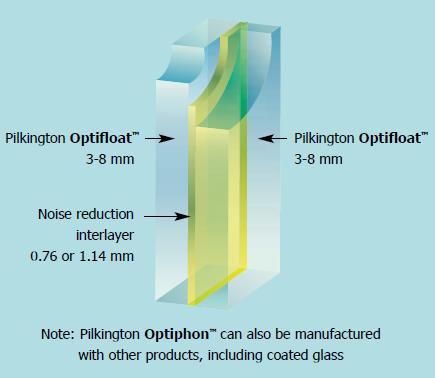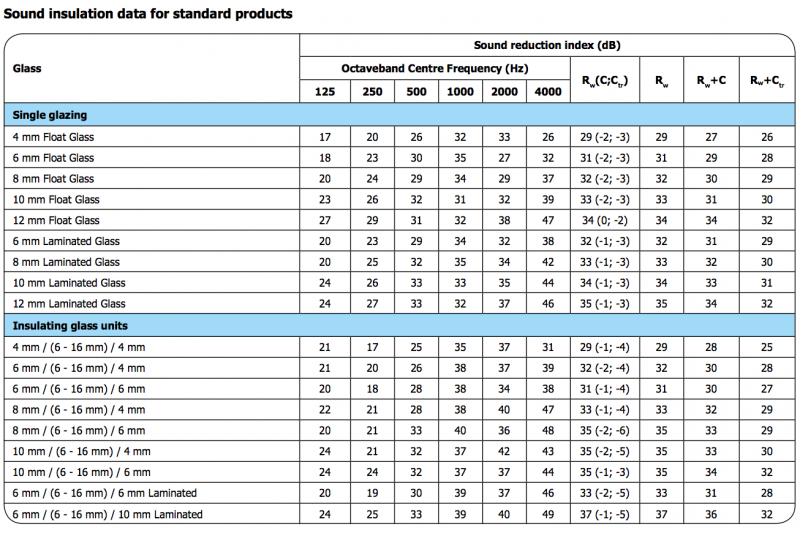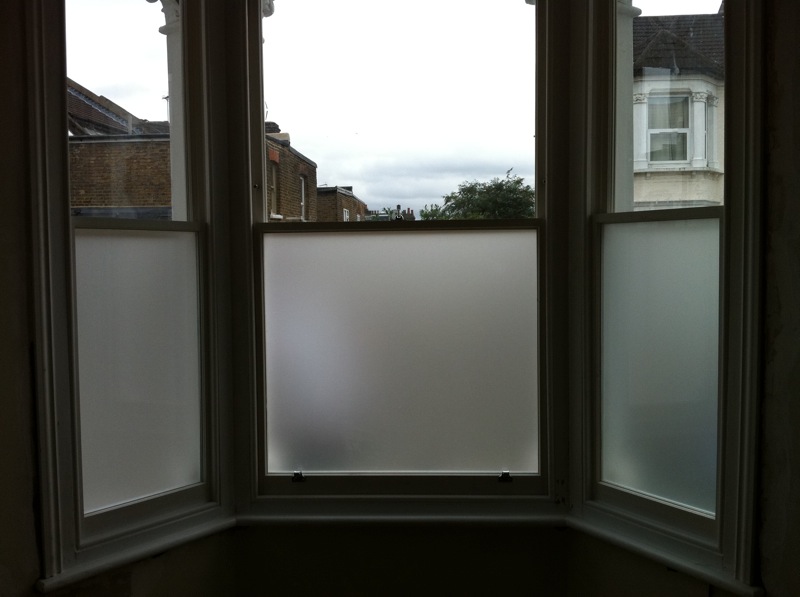Acoustic glazing can significantly improve the quality of life in your home. Glass up to 26mm in thickness can be installed. If you’ve ever seen the edge of normal single glazing in sash windows, you’ll realise that 26mm is seriously thick, and heavy, which isn’t ideal for sash windows that rely on counterbalance mechanisms for free travel of the sash. Sash window sound proofing plays a crucial role in almost all London homes on major bus routes, as well as busy common areas.
Fortunately there are a whole host of options in between the extreme that work very well indeed. There is an 8.8mm option from Saint Gobain that provides quality acoustic insulation as well as being relatively affordable. It is however in no way as effective as a quality standard double glazed unit comprising of two panes of 4mm Low E glass, filled with an inert gas to improve heat insulation properties as well. It is now well known that the air gap between glass is more important that the glass itself at creating the insulation we want. Given the sheer thickness of the glass it has an credibly useful bi-product being the uprated sash window security.
Typically large panes of acoustic laminate glazing will be found in shop fronts and windows where a standard double glazed unit with an air gap is not practical.
If your suffering from noise pollution then a sensible glazing option is the Pilkington acoustic double glazed unit which boasts seriously effective reductions in noise pollution. The Optithon range combined with another glazing option such as self cleaning glass, makes for a really comfortable home sash window sound proofing solution.
This is effectively a triple glazed sash window. Optithon is two panes of glass laminated together with a rubber that is supposed to increase the acoustic insulation properties of the glass, then built into a double glazed unit with self cleaning glass to produce a very quiet home. Please take a look at the diagram. Glazing options range from 8mm to 17mm:

Please be warned however, from experience I can tell you that there is not a great deal of difference at practical level between a quality Pilkington Low E double glazed unit and these glazing options that come with fancy names. If a bus comes thundering past your home, you will not notice any difference between the two without the use of a dB meter. In fact more than the glazing options, the most important part of the acoustic insulation process becomes the draught seals installed into the new windows themselves. Gaps around the windows are far more likely to be the cause of a loss in noise insulation than a quality double glazed unit with a good sized air gap such as 12mm.
So for purposes of acoustic insulation, in most homes we will offer a quality double glazed unit with as large air gap in between the double glazed unit as the sashes can possibly handle. For homeowners we see little need, or demand (when factoring in the cost of Optithon) for the fancy glass names, a quality double glazed unit is far more affordable, and practical all round as well as being very effective against almost all London noise pollution.
That does not mean we will not supply Optithon made into double glazed units. If you are not concerned by budget and diminishing returns in value, and are simply interested in the very best specification available, we will be glad to do this as well. Here is some technical specifications for those really interested in what can be done to reduce noise to an absolute minimum:

As you can see Pilkington acoustic glazing will go all the way up to 16mm laminate, not as thick as Saint Gobain’ 26mm glazing option. However 16mm is certainly going to be more than thick enough in any residential sash window situations – we must consider the weight of the additional glass as well as the thickness of the sash. The weight of 16mm glazing will be in the region of 110 pounds per square metre so your average sash is going to need some seriously uprated pulleys and weights. The weight is likely to be four times the original single glazing, and this may prohibit full travel of your sash window. All invaluable tips and worth keeping in mind when considering glazing options.
This is why we will always steer customers in the direction of best value for money when looking at acoustic glazing options. There is a point where your spend has no further major benefit and becomes a scale of diminishing return on investment. We want to nicely fit in that chart where we get great value and results without the over spend. That sweet spot is always found using a quality double glazed Pilkington low -E unit and a quality sash window draught proofing system. Although this unit is not just for acoustic applications, it is for heat retention as well, it is a great all round unit that carries a ten yer guarantee when installed following Pilkington’s guidelines.
Acoustic glazing doesn’t have to be ugly, it should look exactly the same as any other window, that is why in particular, acoustic glazing will be used on listed properties because it makes absolutely no difference to the aesthetics or a period sash window. There our some other alternatives such as slim glazing which is discussed in the double glazing original sash windows page highlighted. Please see attached a picture of double glazed sash windows manufactured and installed into an original frame. They have had further uprated satin glazing to provide further privacy as the owner does not like nets.

In this example the two side windows are fixed. This means that the acoustic properties of the side windows are almost perfect with an affordable spend. The middle window is draught proofed and this helps to eliminate any further noise that may leak from the frames. If you’d like to know more about acoustic glazing for your sash windows then please do not hesitate to contact me for a free consultation and review of your property. I will be all too glad to workout how to achieve the best results whilst minimising the costs as best as I possibly can.